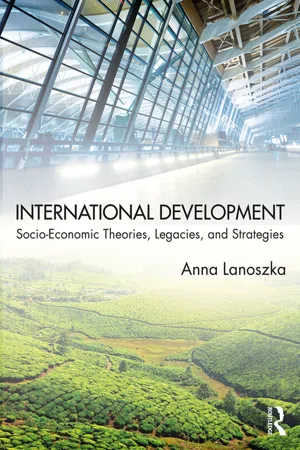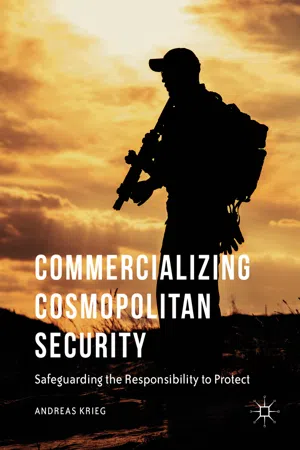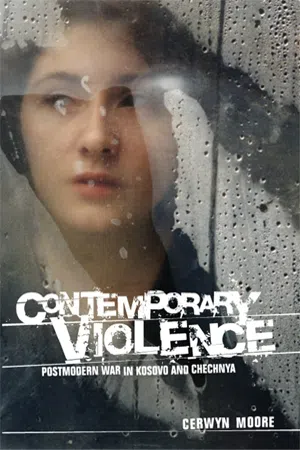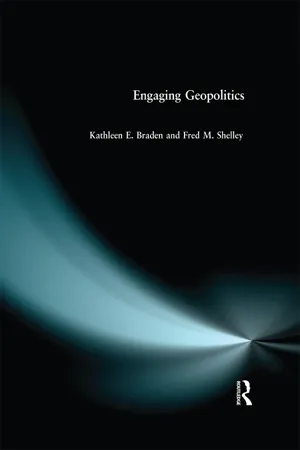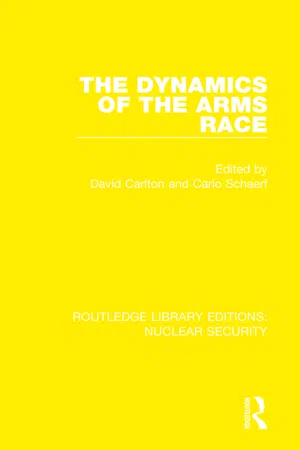History
Global Conflict
Global conflict refers to large-scale military, political, or economic disputes involving multiple countries or regions. These conflicts often have far-reaching consequences and impact the course of world history. Examples include World War I and World War II, which reshaped international relations and led to significant geopolitical changes.
Written by Perlego with AI-assistance
Related key terms
Related key terms
1 of 4
Related key terms
1 of 3
7 Key excerpts on "Global Conflict"
- eBook - ePub
International Development
Socio-Economic Theories, Legacies, and Strategies
- Anna Lanoszka(Author)
- 2018(Publication Date)
- Routledge(Publisher)
Factors that originated in the past, such as ethnic polarization, structural inequalities, and manipulated indigenous political processes matter, but the present pursuit of economic and political objectives by rebel groups and their leaders are also important. In addition, geo-political pressures and external actors can influence the local conflict to the extent that it is difficult to desegregate “the global-local nexus, and capture the exact nature of external–internal connections and how they relate to each other.” 5 In summary, each conflict compels a careful examination of historical legacies and current developments from the three levels of analysis: individual, state, and international, but no single factor determines the outcomes. With the spread of terrorism, the refugee crisis, and uncertainties about the future course of foreign policy in the United States and the EU, the world appears to be entering its most dangerous chapter in decades. 6 In 2017, all 10 dangerous conflicts in the world are considered internal, although several of them have already attracted international involvement. Armed conflicts in Syria, Iraq, Afghanistan, and Ukraine have divided the international community over alliances and the preferred type of response. Conflicts in Turkey, Yemen, Greater Sahel and Lake Chad basin, Congo, and Myanmar are having a hugely destabilizing regional effect. Regional instability is also a growing problem in South Sudan and Mexico. All these conflicts are consuming lives and destroying communities. The violence has resulted in waves of international migrants, who are targeted for recruitment or emigration purposes by armed gangs of traffickers and corrupt officials. While failed states continue to be exploited by militant groups and terrorist organizations, nationalistic populism is on the rise worldwide. We also observe the consolidation of authoritarian regimes in the Middle East and elsewhere - eBook - ePub
Commercializing Cosmopolitan Security
Safeguarding the Responsibility to Protect
- Andreas Krieg(Author)
- 2016(Publication Date)
- Palgrave Macmillan(Publisher)
The increasing permeability of state borders and the continuous circumvention of state sovereignty have had a crucial impact on the roots of conflicts and approaches to conflict resolution. Since 1991 liberal state interventions have been directed towards conflicts that can be described as globalized or new conflicts. Kaldor, for example, describes these new conflicts as ‘globalized’ since they are often characterized by a highly fragmented and decentralized state authority, parties to the conflict that operate outside any framework of state sovereignty and armed forces that are not accountable to any centralized political power. 17 Weiss (2007) defines four essential characteristics that distinguish globalized conflicts from past conflicts: First, the locus of war no longer coincides with state borders – in areas of fragmented authority, in fact, borders are often meaningless. Second instead of states and their militaries being main agents, non-state actors are playing an increasing role. Third, the economies of war are no longer financed principally from government tax revenues but increasingly from illicit activities, aid, and plunder. Fourth, instead of combatants being the main victims, civilians are increasingly paying the lion’s share of costs. 18 Even though the globalization of economic and financial affairs is rooted in the years following the Second World War, the negative effects of economic globalization predominantly in the developing world only became apparent over the past two decades. The macro-economic deregulation of markets and the creation of free-trade zones in the developed world caused an immense outsider problem in emerging markets in the developing world. Unable to compete in the world market, crumbling economies in the developing world caused locals to migrate across borders into regions of anticipated prosperity, creating friction between migrant and indigenous communities - eBook - ePub
Contemporary Violence
Postmodern war in Kosovo and Chechnya
- Cerwyn Moore(Author)
- 2013(Publication Date)
- Manchester University Press(Publisher)
4Globalisation and conflict: screening war in Kosovo and Chechnya
It may be argued that one of the defining features of contemporary world politics has been the alleged resurgence of insecurity as a source of different forms of war.1 The end of the Cold War thus led to a reconsideration of questions of meaning in IR, alongside a broader set of debates about ‘asymmetrical’, ‘fourth generation’ and ‘irregular warfare’. At around the same time the Gulf War issued in a consideration about the role of technology, gesturing toward a form of state-to-state conflict shaped by air-power and list-based targeting. However in the years immediately after the Gulf War, US strategy – which assumed, by 1992, an increasingly humanitarian and interventionist bent – was called into question in Somalia, while brutal conflicts erupted in the heart of Europe, in Bosnia, in Rwanda in Africa, in post-Soviet space in Georgia, in Nagornyy-Karabakh, in Tajikistan and latterly in Chechnya. The argument in this chapter – and for that matter this book as a whole – is that the end of the Cold War and the collapse of the Soviet Union did not simply signal a new era of war, but rather that these changes in global relations make it easier to see what has always been the case: that a hermeneutic approach is needed for the study of war IR.In order to explore the contributions to debates about war within International Relations, this chapter begins with an appraisal of sorts which touches upon a more general critique of modernity as a way into understanding global politics.2 In a general sense modern politics continues to valorise the state – even when diluted in the context of new waves of post-Cold War globalisation. Included within this general tendency are a number of characteristics such as the exclusive use of sovereign power by states, the control of their territories, distinctions between the ‘domestic’ and the ‘foreign’ as different, indeed separate realms, and the definition of distinct geopolitical boundaries. This way of seeing the international system is, of course, problematic, not least due to the increasingly differentiated forms of political identity, and indeed conflict, which question the way boundaries are inscribed.3 - eBook - ePub
- Kathleen Braden, F.M. Shelley(Authors)
- 2014(Publication Date)
- Routledge(Publisher)
Distance plays a key role in most conflicts over history, as neighboring states are more apt to war with each another. Yet some areas of the world are especially prone to conflict, as we saw in Chapter 3. Shatterbelts such as the Middle East and Southeast Asia have experienced numerous armed conflicts over the past centuries. Various approaches to analysis have been made in political geography, from behavioral studies to world systems theories about conflict. In addition to these more traditional ways in which geographic inquiry helps us understand warfare, a new wrinkle on geography and war has been occurring since World War II: the globalization of security threats. This process takes us beyond the realm of traditional borders between states and beyond traditional interstate warfare, to look at the geography of security, not the geography of war. In terms of external or outside threats to citizens of states, borders are becoming more and more permeable despite the best efforts of even wealthy states to protect their citizens. Thus, a new kind of geography, one that looks beyond physical definitions of space to explore perceptual space, and one that moves beyond the state level to global security questions is essential. Four examples of such “unbounded” threats may be noted already within world geopolitics: 1 Weapons technology changes: as nuclear, chemical, and biological weapons evolve, they overcome space barriers more and more effectively. Even so-called conventional weapons are now reaching a level of technology that will put them on a par in destructive power with nuclear weapons - eBook - ePub
- Brynjar Lia(Author)
- 2007(Publication Date)
- Routledge(Publisher)
57Second, there are frequently international interventions in these wars that are usually conducted by multinational coalitions, operating under significant political constraints and driven by values rather than by strict military goals. The second type of conflict thus springs directly from the first one, due to the fact that globalisation has brought the world closer together, instilling both a sense of responsibility for world order and a fear of the consequences of inaction in members of the international community. The fact that conflicts are geographically remote is of diminishing importance, as their effects are felt across distances, as a result of economic and political interdependence and media coverage. As Ayres has correctly pointed out, the main new development since the end of the Cold War is not changes in the number and character of conflicts. It is rather the degree to which the developed world has allowed itself to take in more of the anarchy that has always been present in other parts of the world, but to which it previously did not pay much attention.58 - eBook - ePub
- David Carlton, Carlo Schaerf(Authors)
- 2020(Publication Date)
- Routledge(Publisher)
The first principle of my own research has been to use as widely varied cases as possible, both in time and space, and secondly, to make as few prior assumptions as possible. Even the concept of a ‘system’ as a starting point was rejected because it requires prior assumptions about the nature of international relations. In addition, if one looks for international systems historically there are few obvious, self-evident and self-defining ‘systems’ that emerge. One immediately encounters questions of definitions, i.e. of basic assumptions. So this approach begins instead with the State, defined as a political unit with a territorial base for which the use of organized violence is a viable alternative in its external relations. The idea behind this definition is that what differentiates sovereign states in their interactions is the use of organized violence as a normal, legitimate recourse.One piece of research already carried out has surveyed the international conflicts of all states—as defined above—in four different historical and geographical contexts. Table 1 summarizes the contexts, the number of units in each, and the number of bilateral international conflicts among the units during the period studied.TABLE 1: Bilateral Conflicts in Four International ContextsContext Number of States Direct Conflicts Extraneous Conflicts Total Tensions Disputes Coalition Other* Classical World (280-150 B.C.) 29 45 4 0 2 51 India (1347-1526 A.D.) 23 43 1 0 0 44 Europe (1492-1559 A.D.) 34 48 9 8 8 73 Latin America (1810-1914 A.D.) 21 24 40 3 2 69 Total 107 160 54 11 12 237 * Entry of a state not directly involving either it as a demonstration of ideological solidarity with a third state, or because of financial inducements or other extraneous reasons.The four contexts were chosen to represent as wide a variety as possible in time place, culture, and circumstances. The classical case covers the height of Rome-Carthage rivalry, with Hellenistic and non-Hellenistic cultures in conflict. The Indian case represents a period of multi-state Hindu and Moslem conflict, before the establishment of the Moghul Empire. Renaissance Europe covers the rise of the nation-state in a largely bipolar setting and with a strong Christian-Moslem (Ottoman) clash. The Latin American system represents Western states, in a homogeneous setting and peripheral to the central system. Two cases are modern and two pre-modern; one is entirely within the area of Western civilization, one (Europe) is largely so, one (Classical) is about half so, and one is entirely non-Westem; three have a basic cultural split, and one does not; two are multipolar; two are ‘central’ world systems; and two are subordinate regional systems. - eBook - ePub
War and State Making
The Shaping of the Global Powers
- Karen A. Rasler, William R. Thompson(Authors)
- 2021(Publication Date)
- Routledge(Publisher)
Thus, the notion that wars have punctuated American and other people’s sociopolitical and economic equilibriums on occasion is not novel. What is relatively novel about our approach are the theoretical distinctions concerning, and the empirical evidence relating to, the impacts of different types of wars, which we highlight in this analysis. Some wars simply are more important than others. Yet it is not enough to accept the premise that World War I may have had some influence on social welfare in Britain, women’s voting rights in the United States, or the tenure of the Czarist regime in Russia in ways that the Boer War, the Spanish-American War, or the Russo-Japanese War could not and did not have. The point stressed here is not merely that some wars are more destructive than others and therefore more consequential; such a point is hardly controversial. Rather, one point of departure is the contention that wars represent disputes about how best to manage politico-economic problems and policies at various levels of interaction.Most wars are restricted to disputes of interest primarily to only one or two states. Civil wars, at least prior to outside intervention, are the prototypical single-state war. The Chaco War fought between Bolivia and Paraguay over possession of largely desert territory provides a good example of a two-state case. Some wars assume regional significance when their issues and outcomes have enough importance for proximate states that participation quickly or gradually escalates within the area of interest. The Thirty Years War offers a seventeenth-century example. Some, but not all, of the Arab-Israeli wars since 1948 provide more recent illustrations. Even more rare are global wars. These complicated wars are fought over disputes about fundamental policies and rules for the transoceanic, global political system. Participation can become quite widespread given the planetary implications of these affairs. The extent of major-power participation tends to be complete. The high rate of elite-state participation, in turn, is a function of the perception that a global war’s issues and results are too important to sit out. Whoever wins a global war is able to establish the all-pervasive framework of the postwar political and economic order. World Wars I and II, taken independently, or preferably as two phases of one extended war, represent the most recent example(s) of global war.The statement that war influences state-making processes is a rather sweeping proposition. One way to improve the specificity of such statements (something we think is highly desirable) is to identify which wars are most likely to affect whose state making. Our primary thesis is that global wars are most likely to influence the state-making processes of the principal contestants in these watershed events. The specificity implied by this statement is underscored by the numbers involved. We are talking about a half dozen or so wars, occurring roughly a century apart during the past five hundred years, that have been primary shapers of the state-making activities of fewer than a dozen states. Moreover, in the temporal vicinity of any specific global war only some fraction of the historical set of leading powers actually possessed systemic elite status. The maximal set of fewer than a dozen states thus translates into something closer to a half dozen at any given time.
Index pages curate the most relevant extracts from our library of academic textbooks. They’ve been created using an in-house natural language model (NLM), each adding context and meaning to key research topics.
Explore more topic indexes
Explore more topic indexes
1 of 6
Explore more topic indexes
1 of 4
